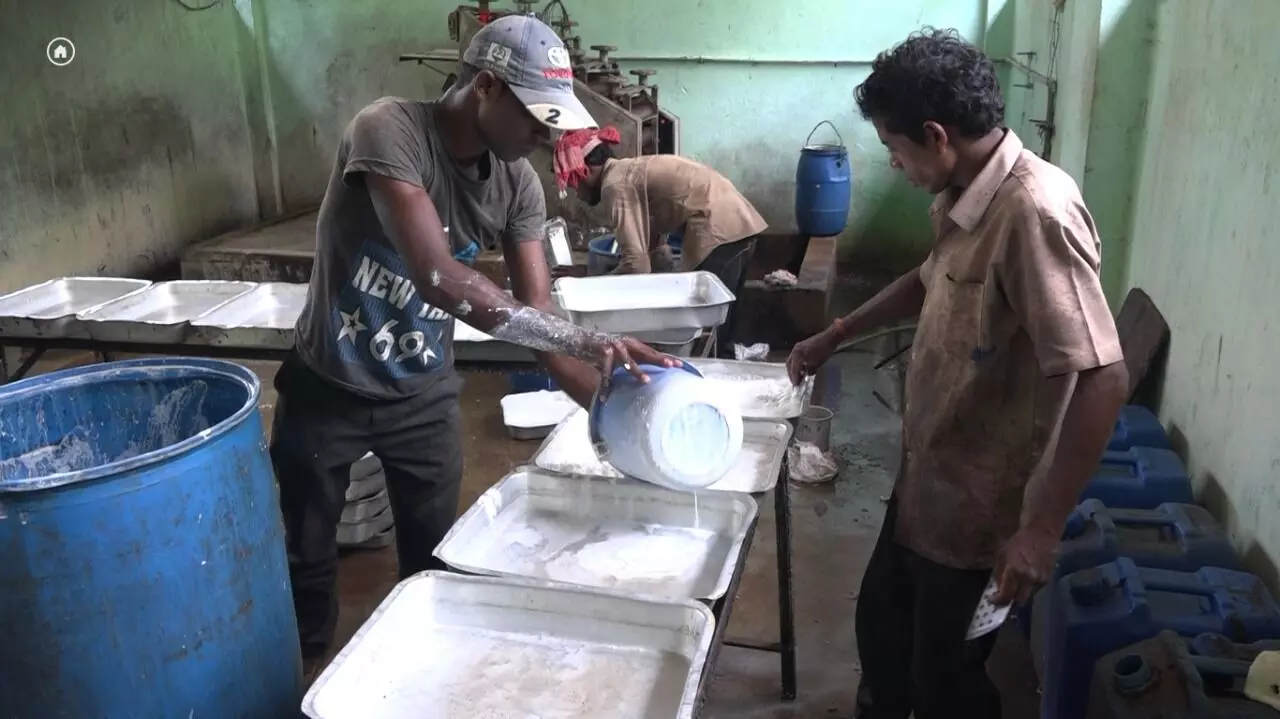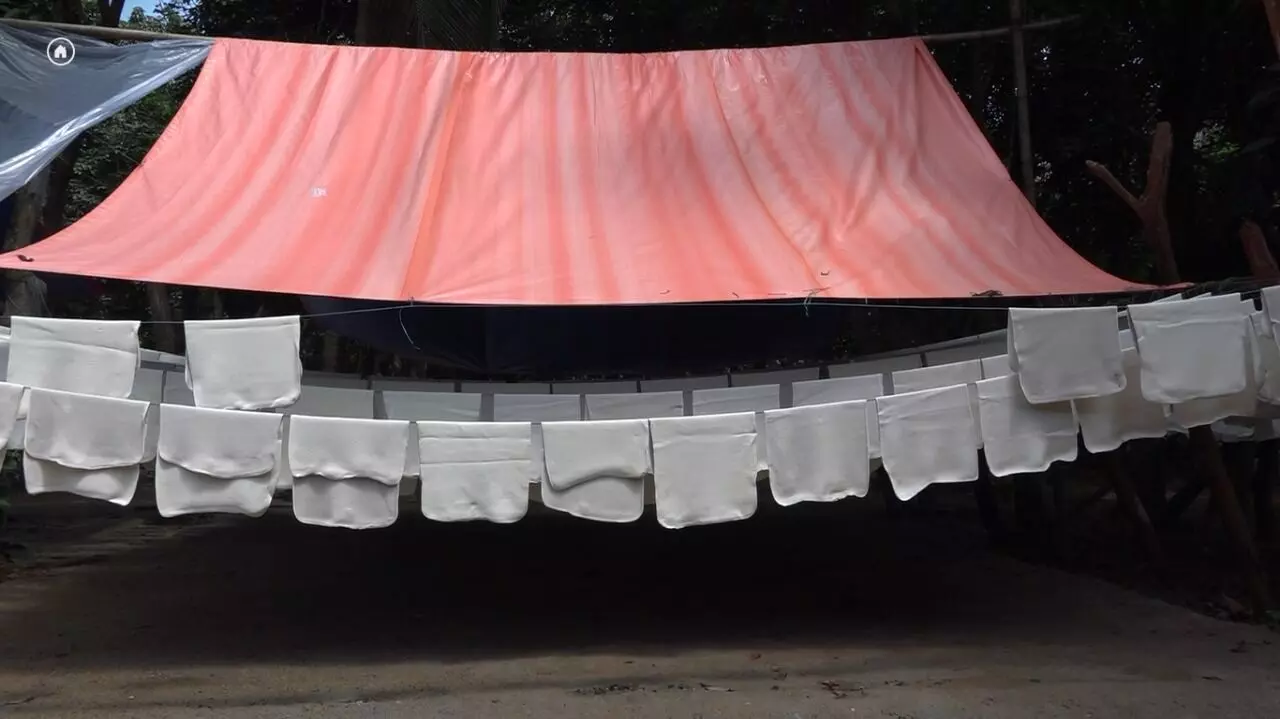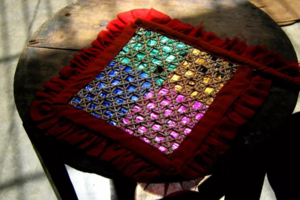Sukaram Singh used to rear goats and Kadaknath birds (chicken) for a living. His three acres of land remained barren. A decade ago, the 42-year-old goat rearer from Kendua village in Mayurbhanj district of Odisha decided to try his hand at rubber cultivation. And rubber plantation has changed his fortunes.
“I came to know that rubber plantation was profitable. I decided to give it a try and planted rubber plants over my three acres of land in 2012. Eight years later, in 2020, I earned three lakh rupees against an investment of a mere thirty thousand rupees in rubber cultivation,” a beaming Sukaram told Gaon Connection.
Similar has been the experience of Mangal Charan Singh of Jadunathpur village under Badasahi block of Mayurbhanj. “I planted rubber saplings over two acres of my barren land in 2013 after getting saplings freely from ITDA (Integrated Tribal Development Agency). For me, it was a new crop whose outcome I wasn’t aware of,” Mangal Charan said.
“In 2021, I tapped the latex from the plants and earned around two lakh rupees that year. The rate I got was good,” said the delighted 35-year-old farmer.
Like Sukaram and Mangal Charan, an increasing number of tribal people in Mayurbhanj district are taking to rubber cultivation due to its lucrative returns.
The trend is visible considering the moist and humid climate of the region with heavy rainfall in the tribal dominated hilly areas of the district is highly suitable for rubber cultivation.

Workers working in a rubber processing unit.
Also Read: Tamarind cakes aid incomes of tribal women in Odisha’s Rayagada
Rubber cultivation in Mayurbhanj
In 1995, the Rubber Board of India for the first time planted 20,000 rubber saplings with the help of state government-run Integrated Tribal Development Agency (ITDA) over 200 acres (1 acre = 0.4 hectare) of barren land in Jadunathpur village.
“At present, rubber cultivation has spread to about 4,500 acres of land and is being undertaken by at least 6,000 farmers. Another 1,500 local people are collecting latex from the rubber trees,” Suresh Kumar Nayak, the Chief Executive Officer (CEO) of Mayurbhanj Rubber Farmers Producer Company, told Gaon Connection.
A rubber plant needs seven years to grow and produce latex, which is sold by the farmers to earn a living and earn profits. “One gets an average of 600 millilitre rubber latex per day from a tree. In a year, a rubber tree releases around 50 to 60 litres of latex. As the rubber trees do not require water and need minimum fertilisers, rubber plantations can give better livelihood opportunities to the tribal people,” said Pranab Das, Project Manager with ITDA.

The trend is visible considering the moist and humid climate of the region with heavy rainfall in the tribal dominated hilly areas of the district is highly suitable for rubber cultivation.
Also Read: Kuchinda chillis add spice to farming in Odisha
Annual profit: Rs 1 lakh from one acre
“In Mayurbhanj district, total area under rubber cultivation has increased because of the lucrative prices the farmers receive in the produce. Most of the rubber farming takes place in Samakhunta, Badasahi, Khunta, Kaptipada, Sarat, Karanjia, Jashipur, Bisoi and Marada blocks,” Nayak said.
“Farmers have a large scope of profit because a rubber farmer makes a profit of around one lakh rupees in a year from an acre of rubber plantation,” the CEO added.
The Mayurbhanj Rubber Farmers Producer Company has established rubber processing plants at Shyamakhunta, Badasahi, Khunta, Jashipur, Bisoi and Marada. “Farmers are producing rubber sheets and bands by processing the rubber latex in the plants after receiving proper training from us,” said Nayak.
At the outset, many farmers were hesitant about the outcome of rubber cultivation. But now they are happy after earning good profits from it.
According to Das of ITDA, farmers are keen to increase the acreage of rubber trees and Odisha Rural Development and Marketing Society (ORMAS) is also helping promote rubber farming and its marketing. “Rubber has a huge demand; many companies are looking for it and are ready to pay good prices,” he added.
Also Read: Dhokra craft brings back smiles on the faces of artisans in Odisha’s tribal heartland
















